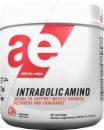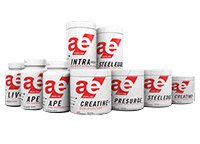
Gain An Edge Through Intra-Workout Supplementation
Fueling your workout involves more than sipping from a water fountain in between sets. Welcome to the world of intra-workout supplementation.
By now, you know that pre-workout and post-workout nutrition is important. These are key windows of opportunity for ingesting nutrients that can improve exercise performance and recovery between workouts, as well as reducing fatigue and muscle damage.
You also might have heard about intra-workout supplementation, the scientific-sounding name for supplementation taken during your workout. But is this just another category of supplements made up by slick marketers to convince you to buy something that offers no real benefit besides lightening your wallet? Or is intra-workout supplementation born from real scientific data and highly beneficial to anyone looking for an edge in maximizing their progress, increasing recovery, and decreasing muscle soreness and breakdown?
If you've used a properly formulated intra-workout supplement, you probably already know the answer. But if you've been too skeptical to ever try one, or if you've tried an improperly formulated product, it's time to learn the facts and intricacies of intra-workout supplementation and set realistic expectations about their benefits.
How did intra-workout supplementation evolve to where it is today?
Intra-workout supplementation used to be nothing more than drinking water and staying hydrated, which is still crucial for high performance. But beyond plain water, people started exploring other options to drink during their workouts to further improve performance and recovery.
Sports scientists began to research different types and concentrations of carbohydrates, adding them to water and measuring performance outcomes and absorption rates into the blood, noting how they were metabolized and used by the human body. The outcome? Adding carbohydrates to water, in specific percentages and ratios to avoid digestive upset, proved to be more effective than drinking water alone.
Unfortunately, that was as far as the research went for over 30 years. It wasn't until the early to mid-1990s that this area of sports science gained traction. Why did such an important aspect of sports nutrition stagnate for so long? Among a variety of factors, one of the largest reasons was simply that sports performance nutrition science was still in its infancy and moving forward very slowly. Another factor was a lack of understanding of exercise physiology and a narrow view of the topic among athletes, coaches and nutritionists.
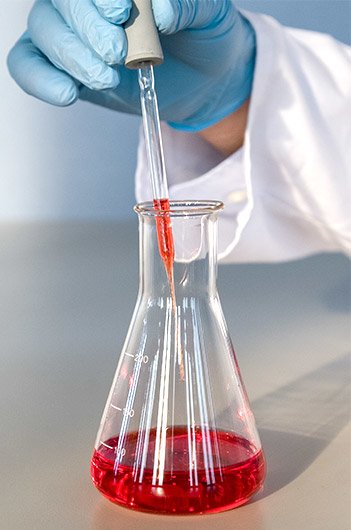
One common misconception that surrounded intra-workout supplementation is best described by this sequence of oversimplified thoughts:
- When I'm training, my body's most efficient fuel sources are muscle glycogen (stored carbohydrates in the muscle), liver glycogen (stored carbohydrate in the liver) and glucose (sugar in the blood). Both fat and protein are less-efficient energy sources.
- If that's the case, why would I want to take anything less effective than carbohydrates during my workout?
Unfortunately, this was typically as far as most people went when considering an athlete's needs during a workout. While technically true, these statements are oversimplified and too narrow in focus. There is so much more to consider beyond simply relying on carbohydrates for energy during a workout and glycogen replenishment post-workout.
Many more questions needed to be asked, researched, debated, studied, and answered to see the bigger picture and develop a more advanced understanding.
In time, sports scientists began to investigate key research areas and questions, such as:
- What is occurring to the structural protein components of your muscles when they get worked out and overloaded?
- Shouldn't we be addressing how our muscles are broken down and how they can optimally build back up during the recovery process?
- What about other types of fatigue that are not caused by lack of carbohydrates? How can we address them?
- Shouldn't different types of training be taken into consideration when making intra-workout recommendations? Should an individual who is lifting weights for 45 minutes have the same nutritional requirements as an endurance athlete training for two hours or more? When training programs are different, shouldn't nutritional needs be different?
While carbohydrates can be essential to performance and recovery, it's an enormous topic that would require a separate article entirely. For the scope of this article, we'll strictly focus on the benefits of amino acids, peptides, and whole proteins taken during a workout, as well as the many distinctions between them.
Let's get into more detail about what this means for you and your workout.
What is the most important component of supplementation during a workout?
Before choosing the right intra-workout concoction for your specific needs, you have to understand the most basic and important aspect of such supplementation—optimal hydration. Simply put: Drink your water!
Did you know that losing as little as 2 percent of your body's water weight will impair your ability to perform? During high-intensity training—including HIIT, repeated sprints, or similar workouts—research has shown that a 2-3 percent decrease in one's body water weight causes a significant drop in performance, reduced number of repetitions completed during a workout, and higher ratings of perceived exertion.1,2 All of this can easily be avoided by simply staying hydrated.
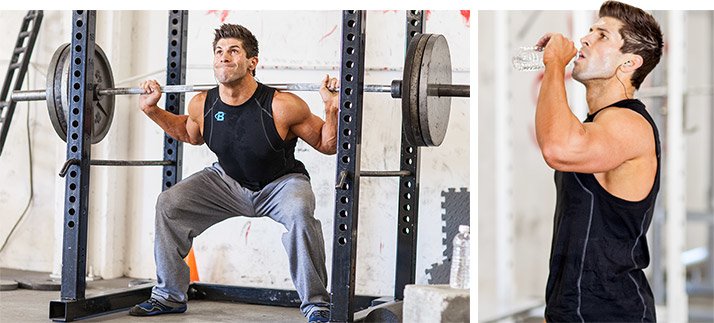
If you do nothing else during your workout, follow this simple hydration guideline to perform at your highest level: Drink 6-12 ounces of water every 15-20 minutes during exercise.
Why are amino acids so beneficial during workouts?
Once you've ensured proper hydration, it's crucial to understand the benefits of amino acids and the many distinctions between their sources.
Exercise causes your body to increase blood flow to working muscles by up to 500 percent, boosting amino-acid delivery to skeletal muscle by 650 percent. At the same time, cellular sensitivity is increased, enabling your muscles to increase the rate of absorption of substrates and fuel. There's no other time of the day when your body is so primed for nutrient absorption.

But it's not just about enhancing absorption; it's also about making major progress. When high concentrations of amino acids are present in the blood stream during exercise, protein synthesis (muscle building) built through exercise is greatly increased. By taking in quick-absorbing amino acids during your workout, you also fight the catabolic (muscle breakdown) effects of exercise, boost recovery, and decrease muscle soreness.3,4
Granted, you don't have to take in amino acids during your workout to take advantage of these exercise-induced benefits. After all, it may not be practical if you participate in high-intensity training, during which drinking water alone can be a challenge. You can drink these quick-absorbing amino acids pre-workout and experience the same benefits.5 What matters most is that the amino acids are in your blood during your workout. In many ways, the pre-workout time frame bleeds into the intra-workout period, and each influences the other's nutrient composition.
One of the old arguments against intra-workout supplementation went something like this: If we eat plenty of protein throughout the day, then taking extra amino acids—even if they are absorbed more quickly and used differently in the body—would have no impact on protein synthesis and muscle recovery. We now know that to be incorrect.
Those who train in the morning in a fasted state, or those who are in contest preparation on a low-calorie diet will typically get the biggest boost from amino-acid supplementation during their workout.6
Which amino acids should I take during my workout?
You've likely received conflicting information about whether you should take just the branched-chain amino acids (BCAAs)—which include leucine, valine and isoleucine—or the full spectrum of all nine essential amino acids (EAAs), which also includes the three BCAAs.Think about it this way: There are nine classified essential amino acids for healthy adults, which means our bodies must get them all from our diets and cannot make them. Taking all nine EAAs may allow for a longer stimulus on protein synthesis than just taking BCAAs alone. But there's potentially an even better strategy than taking all nine EAAs.
Emerging research is showing that under extreme training conditions, nonessential amino acids (NEAAs) may be required to sustain elevated levels of muscle protein synthesis, optimizing the building of new muscle. Previous research has found that a group given whey protein, which contains both EAAs and NEAAs, was able to sustain an elevated rate of muscle protein synthesis for 3-5 hours after exercise, while the group just taking the EAAs kept muscle protein synthesis elevated for only 1-3 hours.7 There is a strong, growing case that taking EAAs and NEAAs together from whey is superior to taking just the EAAs, and certainly superior to taking just the BCAAs.

It's only fair to give a full picture of the EAA versus BCAA debate, including the other side which argues against taking all the EAAs and supports taking just the BCAAs during your workout. It goes like this:
- BCAA advocators: You are an athlete. You likely consume plenty of protein throughout the day, be it from food or protein supplements, which deliver all the EAAs. So why do you need more EAAs intra-workout? All you need during your workout are the most important of the EAAs—that is, the BCAAs, in particular leucine.
- EAA advocators: If that's your argument, then why do you even need the other two BCAAs, valine and isoleucine? Why not just take leucine, when leucine is the amino acid responsible for stimulating protein synthesis? In fact, there may not be any additional benefit to consuming the other two amino acids when it comes to protein synthesis.
In the BCAA advocators' points, they use the argument that you get plenty of all the EAAs in your protein supplement or food throughout the day, so there is no need to take extra beyond the BCAAs.
But if stimulating protein synthesis is the goal, leucine is the key amino acid you need, and using it alone yields the same stimulus results as taking all three BCAAs. When leucine is taken in combination with a protein-rich diet (which, as BCAA advocators note, most athletes consume), it should not cause a concerning depletion of the other BCAAs. And if you follow the research to maximize your benefits, your supplement will include all nine EAAs, not just the three BCAAs, to get the largest and longest protein synthesis stimulus. Therefore, adopting a middle-ground stance of taking just the three BCAAs doesn't make sense.
Which sources of amino acids provide the most benefits?
Not all sources of amino acids are equal. To get the maximum edge without the digestive tract upset, focus on hydrolyzed protein (aim to get 30-50 percent or greater di- and tripeptides) and free-form amino acids. As a distant third, consider your general protein powders.
Hydrolyzed proteins with a 30-50 percent or greater amount of di- and tripeptides
At this time, whey is the best source of protein that has been hydrolyzed (enzymatically broken down) into rapidly absorbing di- and tripeptides. Peptides are chains of two or more amino acids. Your body can absorb the shortest peptides—dipeptides (two amino acids) and tripeptides (three amino acids)—rapidly and without any digestion needed.
Any peptide longer than tripeptide requires digestion to break it down to either a dipeptide or tripeptide, or a single amino acid, before it can be absorbed into the blood.

Pros
- Our bodies' small intestines are naturally designed to absorb di- and tripeptides intact. A specific transporter called PEPT1 rapidly shuttles di- and tripeptides through the small intestine and into the blood, releasing single amino acids.8
- No digestion is required. Absorption is quick and easy, with no stomach upset or gastrointestinal (GI) tract distress.
- It contains both EAAs and NEAAs.
- They can be mixed into water and maintain a very thin consistency, making them easy to drink during or pre-workout.
- Di- and tripeptides may actually enhance free-form amino acid transporters, further increasing the rate of absorption. This is likely the optimal combination for creating the largest possible spike of amino acids in the blood during your workout.
Cons
- Very few protein hydrolysates in the market contain any significant amount of di- and tripeptides.
- The few protein hydrolysates that actually contain these beneficial rapidly-absorbed di- and tripeptides are usually very expensive.
- Di- and tripeptides can taste quite bitter, so flavoring products with high percentages of these peptides so that they taste appealing is often a challenge.
Tip: Be diligent about reading the label of any protein hydrolysate you are considering purchasing. If it does state the percentage of di- and tripeptides, make sure it contains a significant amount in the 30-50 percent range or more.
Free-form amino acids
When a label lists amino acids, but doesn't note a protein source such as whey, egg, plant or otherwise, the product contains what's classified as single free-form amino acids.
Pros
- Our bodies' small intestines house a specific transporter to absorb single free-form amino acids, leading to rapid absorption into the blood without GI distress.
- Ingesting free-form amino acids causes an almost immediate spike in amino acids that can last up to 90 minutes.
- Due to their rapid absorption and subsequent spike in the blood, free-form amino acids produce a rapid spike in protein synthesis stimulus (muscle building).
- They can be mixed into water and maintain a very thin consistency, making them easy to drink during an intense workout.
Cons
- They do not contain the NEAAs.
- These can be more expensive than intact proteins, such as whey, egg or soy.
- Free-form amino acids are more difficult to flavor than intact proteins.
Intact protein sources
Intact protein sources include regular whey protein concentrate, isolate, milk, egg, casein, soy and other plant-based proteins. Intact simply means the proteins are in long chains of amino acids called polypeptides, and they must be broken down into shorter di- and tripeptides and free-form amino acids before our bodies are capable of absorbing them from the small intestine into the blood.
Pros
- They contain all of the EAAs and NEAAs.
- Intact protein sources are inexpensive compared to hydrolyzed proteins and free-form amino acids.
- They're easy to flavor and usually taste good.
- Whey protein in particular has the highest amount of essential amino acids, along with the lowest amount of nonessential amino acids. More specifically, it has the highest naturally occurring amounts of the beneficial amino acid leucine (typically 10 percent).
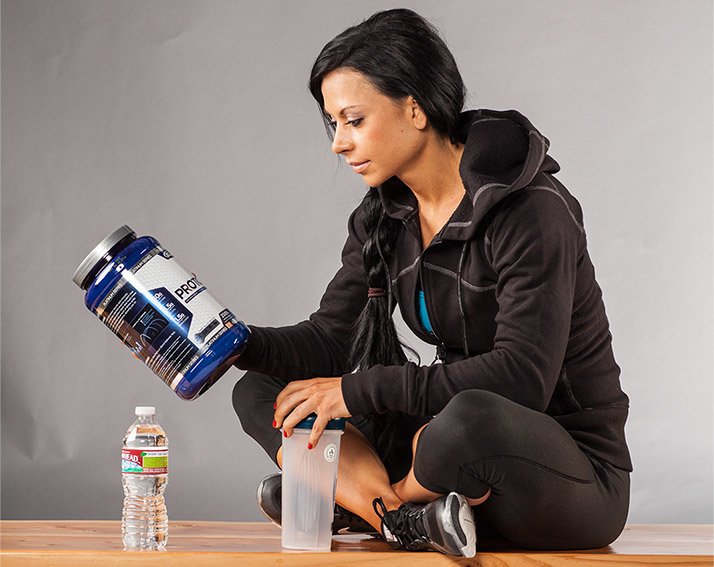
Cons
- They require digestion prior to absorption.
- More time is required before amino acids start appearing in the blood in significant concentrations.
- Digestion and release of amino acids into your blood during your workout is slower, which may limit the acute protein synthesis (muscle building) response.
- They mix into water with a thicker consistency than free-form amino acids or di- and tripeptides, making them impractical to drink during your workout.
What is the optimal dose of essential amino acids?
For the maximum protein synthesis stimulus (muscle building), anticatabolic, and recovery benefits, aim to hit the amounts outlined below during your workout, taking into account the source you choose and the amount of essential amino acids it naturally contains. You can use single sources or combine multiple sources to reach these numbers.
- 6-15 grams of essential amino acids
- 3-5 grams of the amino acid leucine, the most important stimulating protein synthesis amino acid
Example (lower end of the dosing spectrum, combined sources)
- Free-form amino acids: 5 g, with 2.5 g coming from leucine
- Whey protein: 5 g, providing 2.0-2.5 g of EAAs and 0.5-0.7 g coming from leucine
- Total EAAs provided: 7 g, with 3 g of leucine making up the majority
Example (upper end of the dosing spectrum, combined sources)
- Free-form amino acids: 10 g, with 5 g coming from leucine
- Whey protein: 10 g, providing 4.5-4.9 g of EAAs and 1.0-1.4 g coming from leucine.
- Total EAAs provided: 14-15 g, with 6 g of leucine making up the majority

If you use single sources of protein, without the addition of free-form amino acids to reach the optimal amounts of EAAs and leucine, follow these guidelines:
Whey protein
- 25-30 g needed
- 44-49% EAAs
- 10% leucine
Rice protein powder
- 44 g needed
- 35-37% EAAs
- 8% leucine
Soy protein isolate
- 44 g needed
- 35-37% EAAs
- 8% leucine
Egg protein
- 40 g needed
- 42% EAAs
- 8% leucine
Milk protein isolate
- 30-35g needed
- 42% EAAs
- 10% leucine
You have big goals—and you're willing to work hard to reach them. You know the best things in life take time and commitment. There aren't any miracle pills or shortcuts, but there are strategies such as optimal intra-workout supplementation you can use to maximize your progress and performance.
References
- Kraft, J. A., Green, J. M., Bishop, P. A., Richardson, M. T., Neggers, Y. H., & Leeper, J. D. (2010). Impact of dehydration on a full body resistance exercise protocol. European Journal of Applied Physiology, 109(2), 259-267.
- Judelson, D. A., Maresh, C. M., Farrell, M. J., Yamamoto, L. M., Armstrong, L. E., Kraemer, W. J., ... & Anderson, J. M. (2007). Effect of hydration state on strength, power, and resistance exercise performance. Medicine and Science in Sports and Exercise, 39(10), 1817.
- Beelen, M., Koopman, R., Gijsen, A. P., Vandereyt, H., Kies, A. K., Kuipers, H., ... & van Loon, L. J. (2008). Protein coingestion stimulates muscle protein synthesis during resistance-type exercise. American Journal of Physiology-Endocrinology and Metabolism, 295(1), E70-E77.
- Pasiakos, S. M., McClung, H. L., McClung, J. P., Margolis, L. M., Andersen, N. E., Cloutier, G. J., ... & Young, A. J. (2011). Leucine-enriched essential amino acid supplementation during moderate steady state exercise enhances post-exercise muscle protein synthesis. The American Journal of Clinical Nutrition, 94(3), 809-818.
- Tipton, K. D., Rasmussen, B. B., Miller, S. L., Wolf, S. E., Owens-Stovall, S. K., Petrini, B. E., & Wolfe, R. R. (2001). Timing of amino acid-carbohydrate ingestion alters anabolic response of muscle to resistance exercise. American Journal of Physiology-Endocrinology And Metabolism, 281(2), E197-E206.
- Gualano, A. B., Bozza, T., De Campos, P. L., Roschel, H., Costa, A. D. S., Marquezi, M. L., ... & Junior, A. H. L. (2011). Branched-chain amino acids supplementation enhances exercise capacity and lipid oxidation during endurance exercise after muscle glycogen depletion. The Journal of Sports Medicine and Physical Fitness(51), 82-8.
- Katsanos, C.S., Chinkes, D.L., Paddon-Jones, D., Zhang, X.J., Aarsland, A., and Wolfe, P.R. (2008) Whey protein ingestion in elderly persons results in greater muscle protein accrual than ingestion of its constituent essential amino acid content. Nutrition Research, 28(10), 651-8.
- Adibi, S. A. (2003). Regulation of expression of the intestinal oligopeptide transporter (Pept-1) in health and disease. American Journal of Physiology-Gastrointestinal and Liver Physiology, 285(5), G779-G788.



